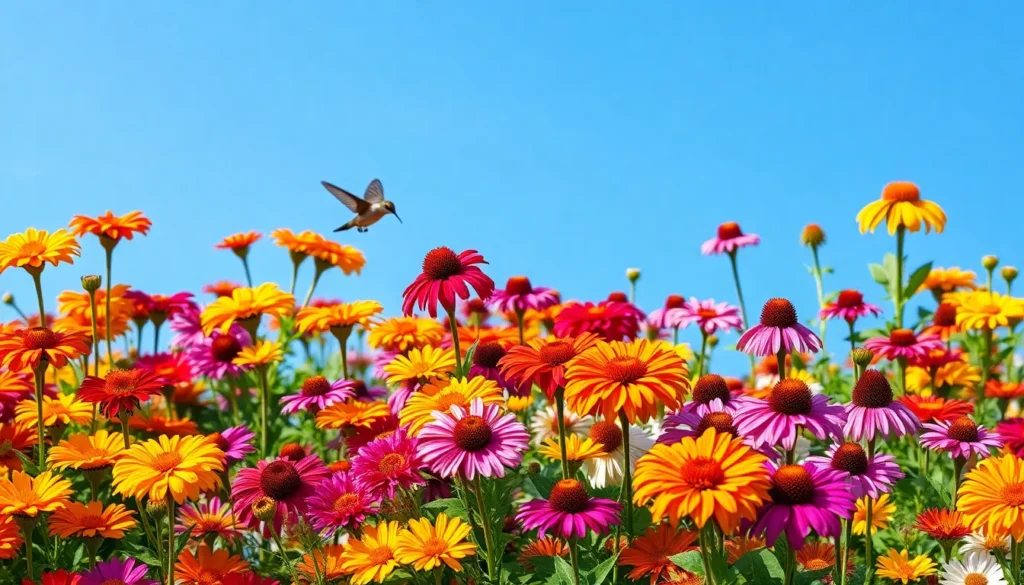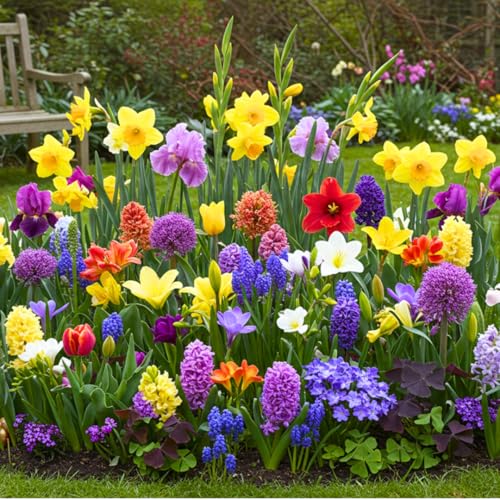Nothing transforms a garden quite like flowers that bloom continuously from spring’s first warm days through summer’s final sunset. We’ve all experienced the disappointment of watching our favorite blooms fade after just a few weeks, leaving gaps in our carefully planned garden beds.
The secret to maintaining vibrant color throughout the entire growing season lies in selecting the right varieties of long-blooming flowers. These remarkable plants don’t just survive the heat – they thrive in it, producing fresh blooms week after week without requiring constant replanting or extensive maintenance.
Whether you’re working with a sprawling backyard industry or a compact container garden, we’ll show you how to create stunning displays that keep delivering beauty all summer long. From drought-tolerant perennials to heat-loving annuals, these continuous bloomers will revolutionize your approach to summer gardening.
Understanding Summer-Blooming Flowers and Their Benefits
Summer blooming flowers transform our gardens into vibrant displays that last from June through September. These remarkable plants offer continuous color when we need it most during the hottest months.
What Makes a Flower Bloom All Summer
Continuous flowering mechanisms distinguish summer bloomers from their short lived counterparts. These plants produce multiple flower buds throughout the growing season rather than one single flush of blooms. Deadheading spent flowers triggers new bud formation, creating an endless cycle of fresh blooms.
Heat tolerance plays a crucial role in extended flowering periods. Summer bloomers like zinnias and marigolds thrive in temperatures between 75-85°F while maintaining their blooming capacity. Their cellular structure allows them to photosynthesize efficiently during hot weather without shutting down flower production.
Energy distribution systems in these plants allocate resources to both vegetative growth and flower development simultaneously. Unlike spring bloomers that exhaust their energy reserves quickly, summer varieties maintain balanced nutrition flow to support ongoing bud formation throughout the season.
Why Choose Long-Blooming Varieties for Your Garden
Cost effectiveness makes long blooming flowers our smartest investment choice. We spend money once on plants like petunias or calibrachoa and enjoy months of continuous color instead of replacing short lived varieties multiple times per season.
Maintenance reduction becomes important with summer bloomers requiring minimal intervention. These hardy performers need occasional watering and deadheading compared to high maintenance plants that demand constant attention and replacement.
Design flexibility expands our creative options with reliable color sources. We can plan garden layouts confidently knowing that our chosen varieties will maintain their visual impact from early summer through first frost. Container gardens especially benefit from consistent bloomers that anchor our seasonal displays.
Pollinator support increases substantially with extended flowering periods. Bees and butterflies depend on continuous nectar sources throughout summer months, making our long blooming choices essential for local network health.
Annual Flowers That Provide Continuous Summer Color
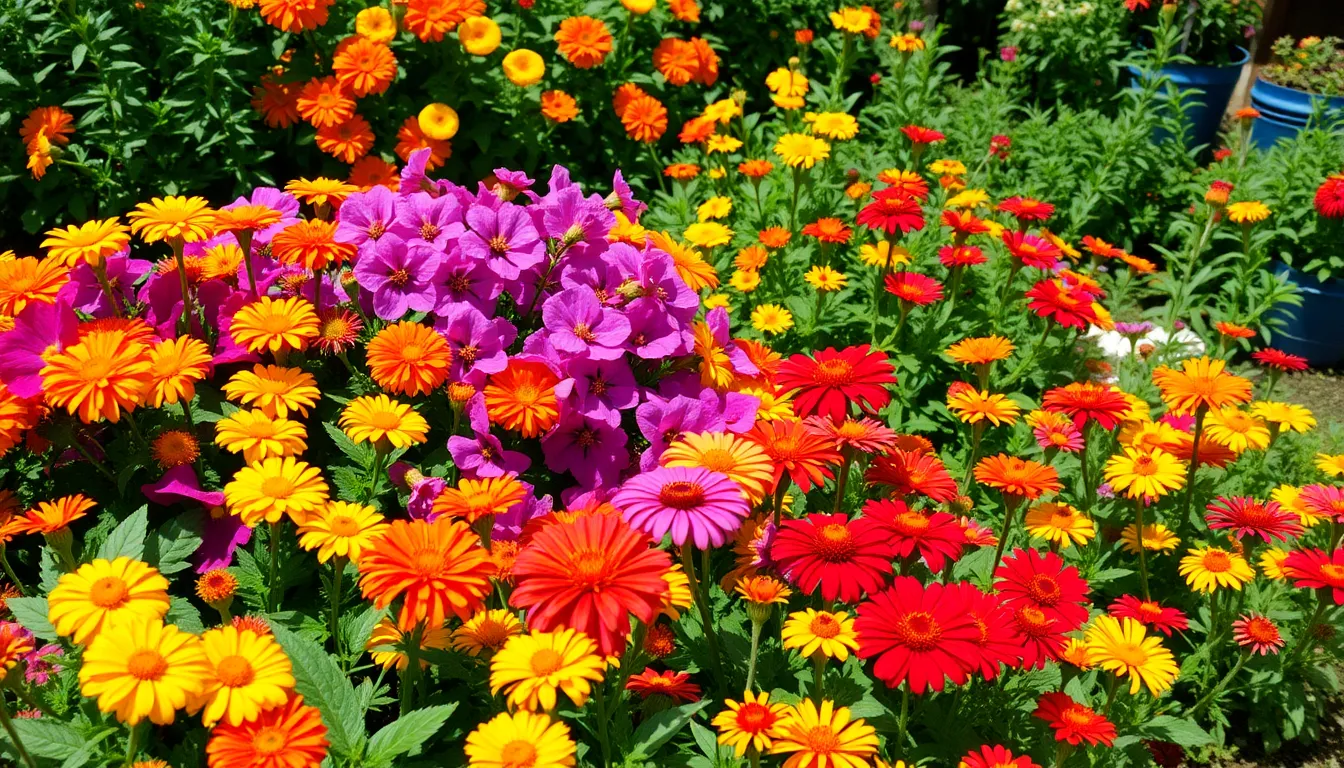
Annual flowers offer the most reliable way to maintain vibrant garden displays from early summer through the first frost. These seasonal performers dedicate all their energy to producing abundant blooms rather than developing extensive root systems.
Marigolds: Hardy and Heat-Tolerant Champions
Marigolds top our list of heat tolerant annuals because they thrive in temperatures that stress other flowering plants. These resilient flowers produce continuous blooms in vibrant yellow and orange shades throughout the hottest summer months. We recommend starting marigolds from seed since they germinate easily and grow quickly in warm soil conditions.
Heat tolerance makes marigolds perfect for sunny garden beds and containers where other flowers might struggle. They require minimal water once established and actually prefer slightly dry conditions over consistently moist soil. Garden centers typically stock both compact French marigolds and taller African varieties to suit different planting needs.
Petunias: Cascading Beauty for Containers and Beds
Petunias deliver spectacular cascading displays when planted in hanging baskets and container gardens. These versatile annuals bloom continuously in pink, purple, and white colors when provided with full sun exposure and consistent moisture. We’ve found that pinching back leggy stems encourages bushier growth and more flower production.
Container gardening becomes effortless with petunias since they adapt well to confined root spaces. Regular deadheading removes spent blooms and promotes new flower development throughout the growing season. Heat loving varieties like grandiflora and multiflora petunias perform exceptionally well in summer garden conditions.
Impatiens: Perfect Shade-Loving Summer Bloomers
Impatiens solve the challenge of adding color to shaded garden areas where sun loving flowers can’t survive. These delicate bloomers produce continuous flowers in partial to full shade conditions without requiring direct sunlight. We plant impatiens under trees, along north facing walls, and in covered patio areas for reliable summer color.
Shade gardening becomes vibrant when impatiens are planted in masses or combined with other shade tolerant plants. Their tender foliage requires consistent moisture but rewards gardeners with non stop blooming from spring until fall frost. New Guinea impatiens offer larger flowers and more heat tolerance than traditional varieties.
Zinnias: Drought-Resistant Flowers with Vibrant Colors
Zinnias rank among the most drought resistant annual flowers while delivering an impressive array of bright colors. These sturdy plants produce multiple blooms per stem and continue flowering even during hot, dry summer conditions. We start zinnias from seed because they grow rapidly and don’t transplant well once established.
Drought tolerance makes zinnias ideal for water wise gardens and areas with inconsistent rainfall. Their vibrant colors include red, orange, yellow, pink, and purple in both single and double flower forms. Pollinators flock to zinnia flowers, making them excellent choices for butterfly gardens and bee friendly landscapes.
Perennial Flowers That Return Year After Year
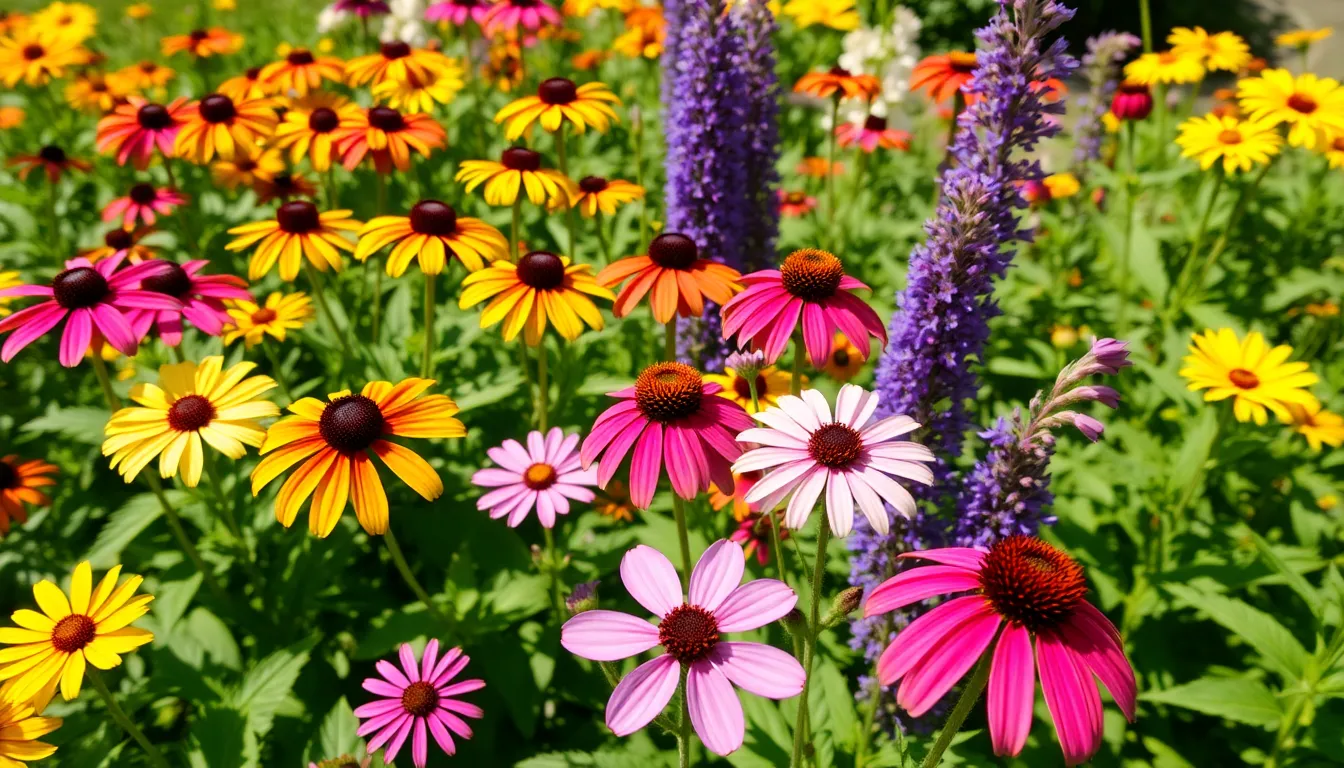
Unlike annuals that require yearly replanting, these hardy perennials establish strong root systems and provide lasting color season after season. We’ve selected four outstanding varieties that bloom throughout summer while requiring minimal maintenance once established.
Black-Eyed Susans: Native Wildflowers for Easy Care
Black-eyed Susans showcase golden-yellow petals with distinctive dark brown centers that create stunning focal points in any garden design. These native wildflowers thrive in full sun conditions and demonstrate exceptional drought tolerance once their root systems mature. We recommend planting them in borders, meadows, or naturalized garden areas where they’ll spread naturally over time.
Blooming profusely from summer into fall, these hardy perennials attract butterflies and songbirds to your outdoor space. Their cheerful daisy-like appearance brightens gardens while requiring virtually no special care or watering schedules. Wildlife benefits extend beyond pollinators as the seed heads provide winter food sources for birds.
Coneflowers: Pollinator-Friendly Blooms All Season
Coneflowers produce sturdy daisy-like flowers in purple, pink, and white shades that maintain their beauty from early summer through fall. These reliable perennials adapt well to hot, sunny locations with well-drained soil conditions. We’ve observed their exceptional ability to support garden biodiversity by attracting bees, butterflies, and beneficial insects.
Their raised cone centers become prominent as petals fade, creating architectural interest in autumn landscapes. Deadheading spent blooms encourages continued flowering, though leaving some seed heads provides winter interest and bird food. These low-maintenance plants multiply gradually, creating larger displays each growing season.
Bee Balm: Fragrant Flowers That Attract Butterflies
Bee balm displays tubular, fuzzy flowers in vibrant red, pink, purple, and white colors that create spectacular summer displays. This aromatic perennial thrives in full sun to part shade conditions while demonstrating excellent resistance to deer browsing. We particularly appreciate its ability to attract butterflies, hummingbirds, and native bees throughout the blooming season.
Flowering begins in early summer and continues through fall with proper care and occasional deadheading. The plant’s natural fragrance adds sensory appeal to garden spaces, making it ideal for herb gardens or areas near seating. Once established, bee balm tolerates drought conditions while spreading to form attractive colonies.
Salvia: Spiky Blooms in Multiple Colors
Salvia produces distinctive upright flower spikes in blue, purple, red, and white varieties that add vertical interest to garden compositions. Common varieties like Salvia nemorosa and Salvia splendens offer exceptional drought tolerance combined with extended blooming periods. We recommend these versatile perennials for their ability to attract bees, butterflies, and hummingbirds consistently.
Their long-lasting blooms continue throughout summer with minimal water requirements once plants establish mature root systems. Flower spikes create excellent cut flower arrangements while providing nectar sources for pollinators. Regular deadheading promotes continuous bloom production and maintains tidy plant appearance through the growing season.
Low-Maintenance Flowers for Busy Gardeners
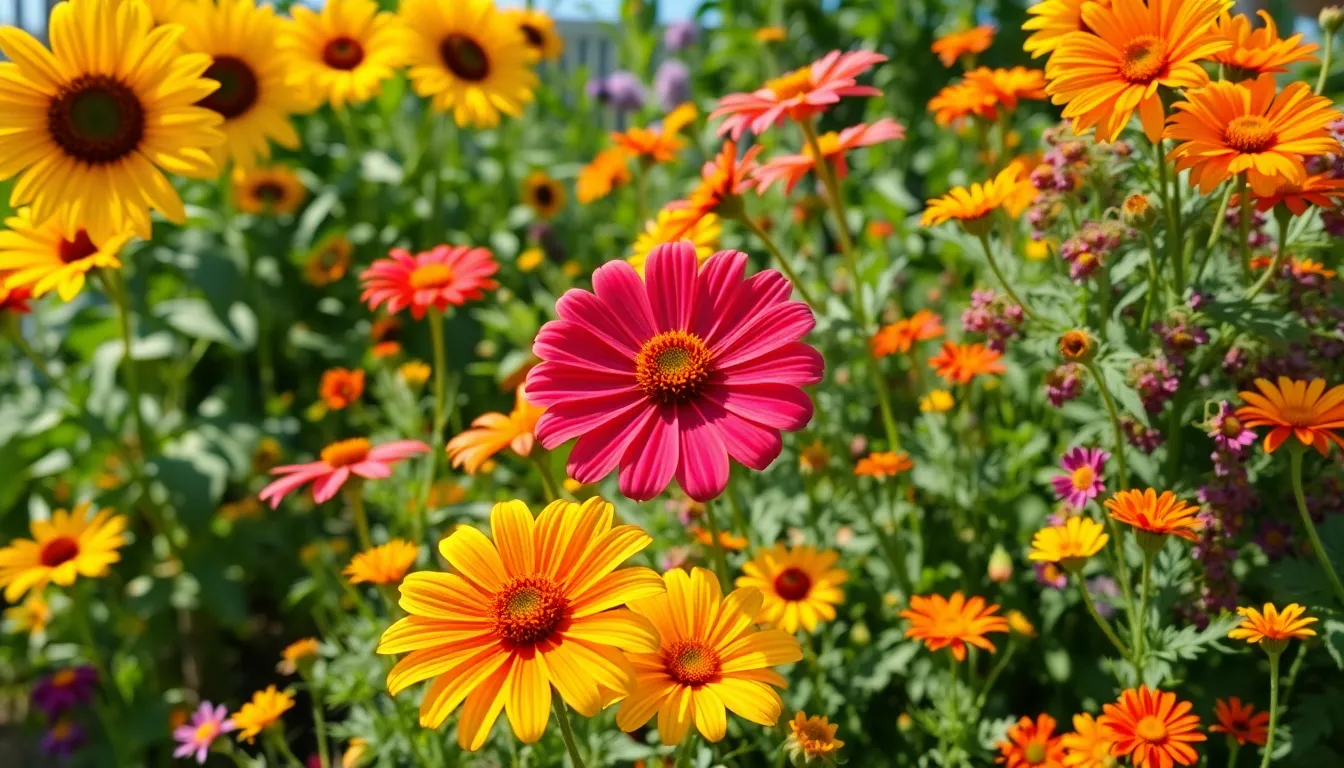
We understand that not everyone has hours to spend tending to their garden, which is why we’ve selected these exceptional flowers that thrive with minimal attention while providing stunning summer color.
Sunflowers: Giant Blooms with Minimal Care Required
Sunflowers deliver impressive results with remarkably little effort from gardeners. These towering beauties produce giant blooms that can reach up to 12 inches across while requiring only full sun and well-drained soil to flourish. Water them deeply once a week during dry spells, and they’ll reward you with cheerful yellow faces that follow the sun throughout the day. Plant seeds directly in the ground after the last frost, spacing them 6 inches apart for smaller varieties or 2 feet apart for giant types. We love how sunflowers naturally support themselves with strong stems, eliminating the need for staking in most cases.
Cosmos: Self-Seeding Flowers That Keep Coming Back
Cosmos create a continuous display of delicate blooms throughout the summer months with virtually no maintenance required. These charming flowers self-seed readily, meaning you’ll enjoy new plants year after year without replanting. Scatter seeds in spring after the soil warms, and cosmos will establish themselves in poor to average soil conditions where other flowers might struggle. Deadheading spent blooms encourages more flowers, but even this task is optional since cosmos naturally drop seeds for next year’s garden. We appreciate how these flowers thrive in a variety of soil conditions, from sandy to clay, making them perfect for challenging garden spots.
Nasturtiums: Edible Flowers with Peppery Flavor
Nasturtiums offer double the value by providing both beautiful blooms and culinary enhancement with their distinctive peppery flavor. These versatile flowers grow quickly from seed and prefer poor soil conditions, actually producing more flowers when not pampered with rich fertilizer. Plant them in full sun to partial shade, and they’ll cascade beautifully from containers or spread as ground cover in garden beds. We recommend harvesting the flowers regularly for salads and garnishes, which also encourages continued blooming throughout the summer. Both the flowers and leaves are edible, with the young leaves offering a milder version of the flowers’ spicy kick.
Heat-Tolerant Flowers for Hot Summer Climates
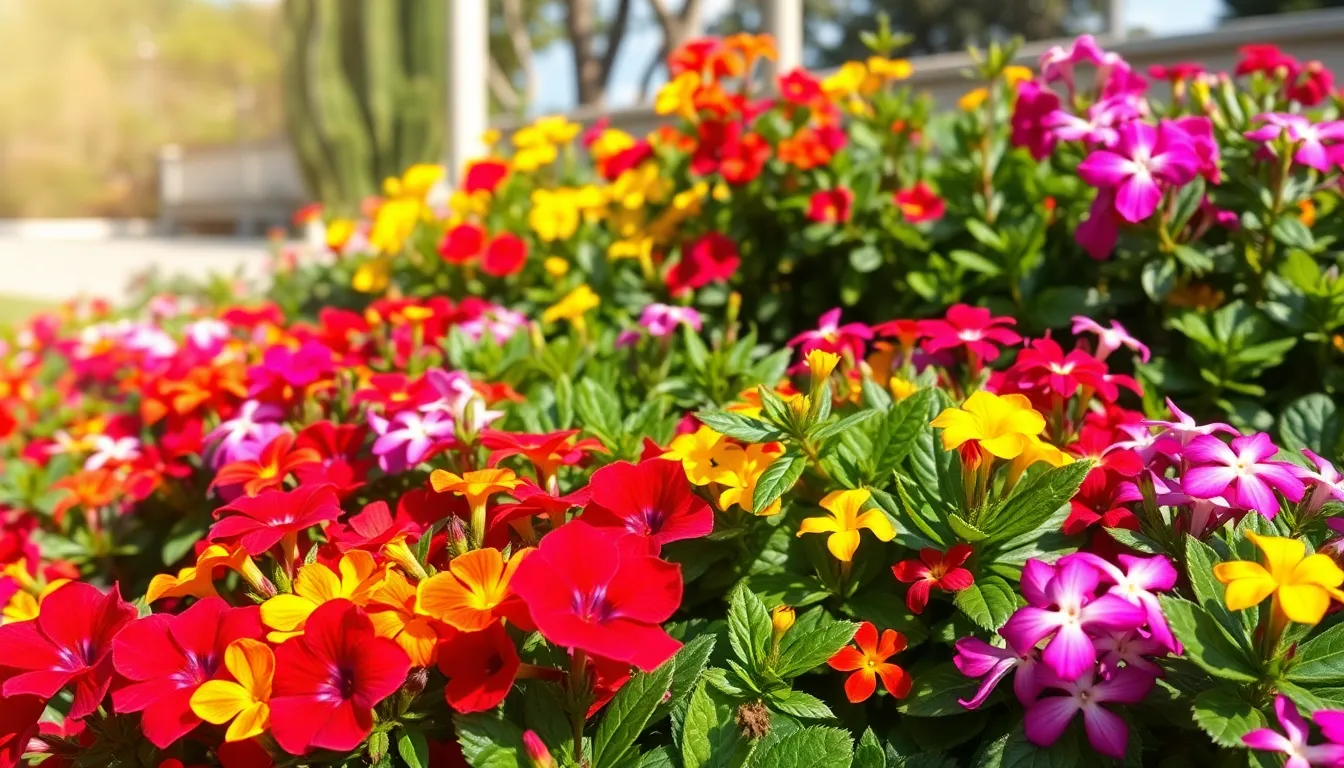
Extreme temperatures don’t have to mean sacrificing beautiful blooms in our gardens. We’ve identified several exceptional varieties that actually thrive when the mercury rises.
Portulaca: Succulent Flowers That Thrive in Heat
Portulaca grandiflora delivers stunning rose-like flowers while withstanding the harshest summer conditions. This succulent annual reaches 3–12 inches tall and spreads an impressive 6–42 inches wide, creating colorful ground cover from summer until frost. We appreciate how its fleshy leaves store water naturally, allowing plants to survive drought periods without supplemental irrigation.
Rock gardens and hanging baskets showcase portulaca’s vibrant blooms perfectly. Full sun exposure and lean soils create optimal growing conditions for this drought-resistant champion. Gardeners can expect continuous flowering throughout the hottest months, making it an ideal choice for water-wise landscapes.
Vinca: Glossy Leaves and Continuous Blooms
Vinca offers glossy green foliage paired with non-stop colorful flowers from late spring through fall. Annual vinca (Catharanthus roseus) demonstrates exceptional heat and drought resistance, thriving in full sun locations with well-drained soil. We recommend this versatile plant for summer bedding displays and container arrangements where consistent performance matters most.
Continuous blooming sets vinca apart from other heat-tolerant options. Gardeners appreciate its low-maintenance nature and reliable color production during peak summer stress periods. Container gardens benefit greatly from vinca’s compact growth habit and extended flowering season.
Pentas: Star-Shaped Flowers Perfect for Southern Gardens
Pentas lanceolata produces distinctive star-shaped flowers that attract butterflies throughout the growing season. Southern gardeners treasure this perennial for its profuse summer blooms and easy care requirements. We find pentas performs best in full sun to partial shade locations with regular watering for optimal flower production.
Butterfly gardens gain important ecological value from pentas plantings. Long-lasting color and consistent blooming make this species a favorite among experienced southern gardeners. Regular watering ensures peak performance, while the star-shaped flowers create unique visual interest in mixed borders and foundation plantings.
Container-Friendly Flowers for Small Spaces
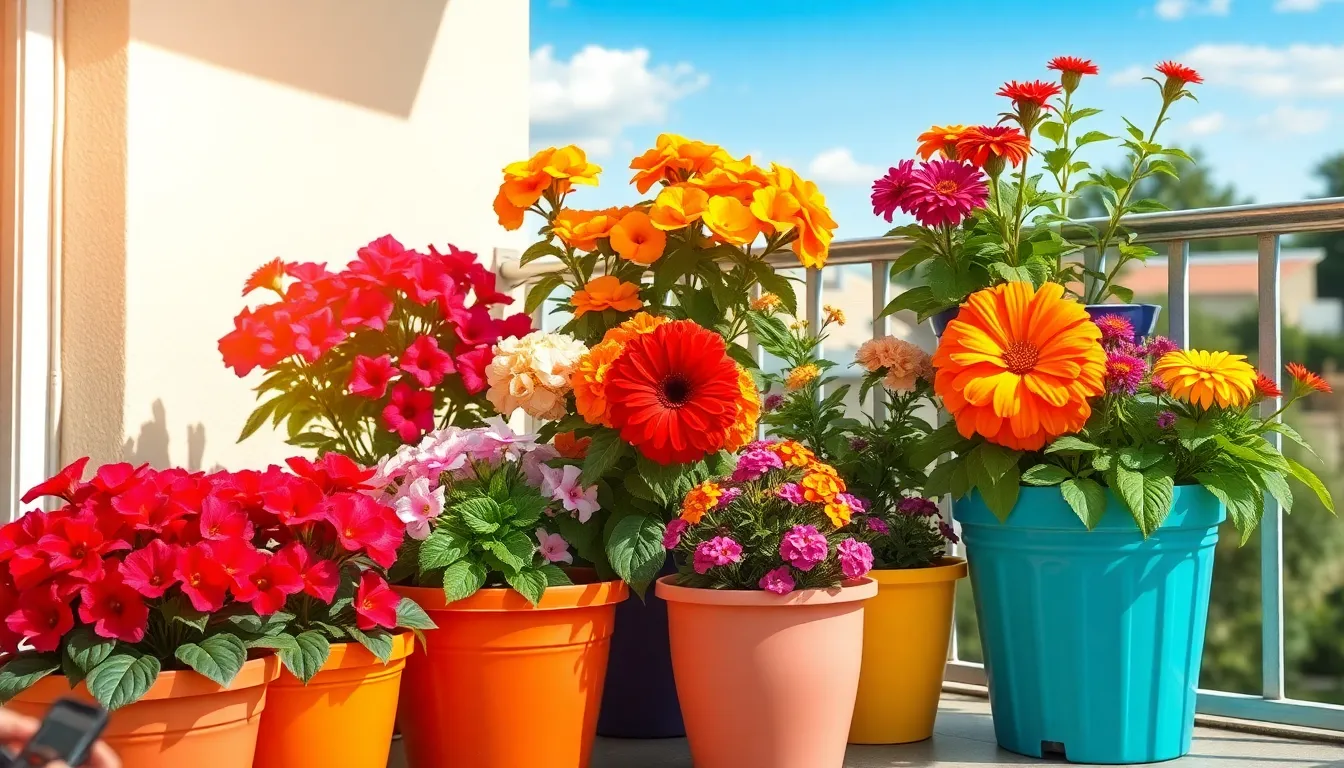
Limited space doesn’t mean you can’t enjoy continuous summer blooms. Container gardening opens up endless possibilities for creating vibrant displays on patios, balconies, and small outdoor areas.
Begonias: Shade-Tolerant Blooms for Patio Containers
Begonias excel in patio containers where partial shade creates challenging growing conditions for other flowers. These versatile plants produce continuous blooms throughout summer in colors ranging from bright red and pink to soft white and coral. We recommend wax begonias for their compact growth habit and fibrous begonias for their larger, showier flowers.
Minimal maintenance makes begonias perfect for busy gardeners who want maximum impact with little effort. You’ll need to water them regularly but avoid overwatering, as begonias prefer slightly moist soil rather than soggy conditions. They thrive in temperatures between 65-75°F and can handle morning sun with afternoon shade.
Small spaces benefit from begonias’ ability to bloom continuously without deadheading or special care. Their neat, mounding growth habit fits perfectly in 8-12 inch containers, and you can mix different colored varieties for stunning combinations that last all season long.
Calibrachoa: Mini Petunias Perfect for Hanging Baskets
Calibrachoa delivers the charm of petunias in a smaller, more manageable package that’s ideal for hanging displays. Often called “Million Bells,” these trailing flowers produce hundreds of small blooms in vibrant colors including purple, pink, yellow, orange, and white. Full sun exposure ensures the most prolific blooming throughout the summer months.
Hanging baskets showcase calibrachoa’s natural trailing habit, creating cascading waterfalls of color that add vertical interest to small spaces. The plants can trail 12-18 inches, making them perfect for elevated containers where their beauty can be appreciated from below. We’ve found they perform best in well-draining potting mix with consistent moisture.
Multiple colors can be combined in single containers to create stunning mixed displays that maintain their beauty all summer. Unlike their larger petunia cousins, calibrachoa flowers are naturally self-cleaning, so you won’t need to spend time deadheading to keep them looking their best.
Lantana: Trailing Varieties Ideal for Window Boxes
Lantana thrives in full sun conditions and extreme heat, making it perfect for window boxes that receive intense summer sunlight. These drought-tolerant flowers produce clusters of small blooms in vibrant combinations like yellow and orange, pink and white, or solid colors including purple and red. Their ability to withstand high temperatures without wilting makes them reliable choices for south-facing windows.
Trailing varieties specifically excel in window box applications where their cascading growth creates beautiful displays that spill over container edges. You can expect 12-24 inches of trailing growth that produces continuous blooms without requiring deadheading maintenance. This makes lantana perfect for hard-to-reach window boxes where regular maintenance would be difficult.
Heat and drought tolerance means lantana continues blooming even when other container flowers struggle in extreme summer conditions. We recommend watering deeply but infrequently, allowing the soil to dry slightly between waterings. This approach encourages strong root development and enhances the plant’s natural heat tolerance.
Tips for Maintaining Continuous Summer Blooms
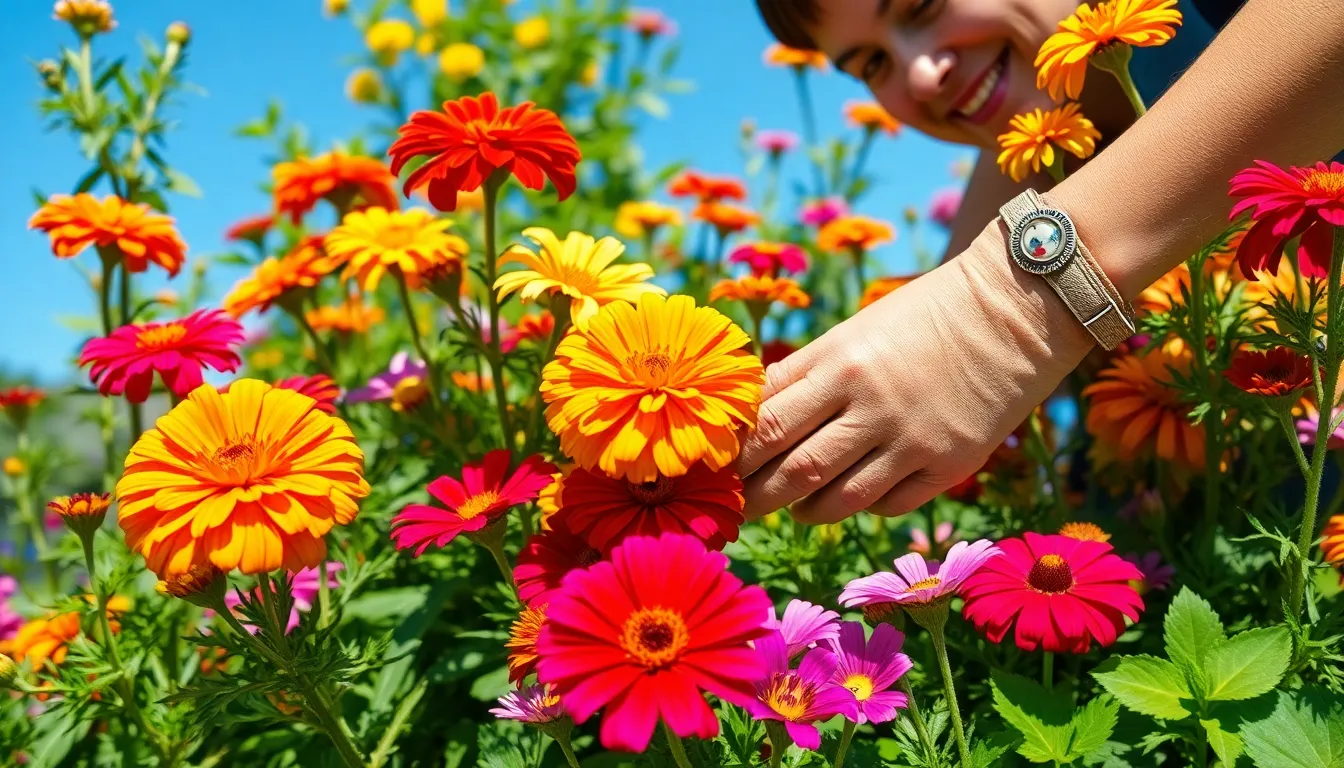
Keeping our summer gardens vibrant requires strategic care techniques that maximize flowering potential. We’ll explore proven methods that ensure our carefully selected blooms continue producing colorful displays throughout the entire growing season.
Deadheading Techniques to Encourage More Flowers
Deadheading spent blooms redirects plant energy toward producing new flowers instead of seed formation. We should remove faded flowers regularly using clean scissors or simply pinch them off with our fingers to promote continuous growth. This technique works especially well with flowers like marigolds, petunias, and zinnias that we’ve already discussed.
Timing matters when we deadhead our summer bloomers. Early morning or evening hours provide the best conditions for this maintenance task since plants aren’t stressed by midday heat. Regular deadheading sessions every few days keep our Red Hot Poker and Russian Sage producing their stunning displays from late spring through frost.
Different flowers require exact deadheading approaches for optimal results. Soft stemmed plants like impatiens respond well to gentle pinching while woody stemmed varieties need clean cuts with sharp tools. We can encourage reblooming in our celosia and anthuriums by removing entire flower heads once they begin to fade.
Proper Watering and Fertilizing Schedules
Consistent moisture levels support continuous blooming without creating waterlogged conditions that harm roots. We should water deeply but less frequently to encourage strong root development in our summer flowering plants. Morning watering sessions allow plants to absorb moisture before afternoon heat stress occurs.
Balanced fertilizers during the growing season maintain plant health and flower production. We can apply slow release fertilizers at planting time and supplement with liquid feeds every 2-3 weeks throughout summer. Our Moody Blues™ Veronica and other continuous bloomers benefit from this steady nutrition approach.
Monitoring soil moisture prevents both drought stress and overwatering issues. We should check soil depth with our finger before watering since surface drying doesn’t always indicate plant needs. Container plants require more frequent attention than garden beds due to faster moisture evaporation rates.
Succession Planting for Non-Stop Color
Succession planting creates overlapping bloom periods that eliminate color gaps in our summer displays. We can plant the same varieties at 2-3 week intervals or choose different cultivars with staggered flowering times. This strategy works particularly well with fast growing annuals like cosmos and nasturtiums.
Combining perennials and annuals ensures year round blooms with varying maintenance requirements. We should establish long lived perennials like Black-Eyed Susans and coneflowers as our garden backbone while filling gaps with seasonal annuals. This approach reduces replanting work while maintaining constant visual interest.
Strategic timing of plantings maximizes our growing season potential. We can start cool season varieties early then transition to heat tolerant options like portulaca and vinca as temperatures rise. Late summer plantings of fall blooming varieties extend our color display well beyond traditional summer months.
Conclusion
Creating a garden filled with flowers that bloom all summer isn’t just about choosing the right plants—it’s about transforming your outdoor space into a continuous celebration of color and life. We’ve shown you that with thoughtful selection and minimal effort you can enjoy vibrant blooms from spring’s first warm days through autumn’s gentle arrival.
The beauty of summer-long flowering lies in its simplicity. Whether you’re working with expansive garden beds or compact container displays these reliable bloomers deliver consistent results while supporting the pollinators that make our gardens thrive.
Your summer garden awaits—filled with endless possibilities for color fragrance and joy. With these proven varieties and simple care techniques you’re ready to create the vibrant industry you’ve always envisioned.
Frequently Asked Questions
What are the best long-blooming flowers for summer gardens?
Top long-blooming summer flowers include marigolds, petunias, zinnias, and impatiens for annuals. For perennials, consider Black-Eyed Susans, coneflowers, bee balm, and salvia. These varieties provide continuous color from spring through fall, thrive in heat, and require minimal maintenance once established.
Which flowers are most heat-tolerant for extreme summer temperatures?
Portulaca grandiflora, vinca, and pentas are excellent heat-tolerant choices. These flowers thrive in extreme temperatures, resist drought conditions, and continue blooming throughout the hottest months. They’re perfect for southern gardens and areas with harsh summer climates.
What are the best flowers for container gardens and small spaces?
Begonias, calibrachoa (Million Bells), and lantana excel in containers. Begonias thrive in partial shade, calibrachoa creates beautiful trailing displays in hanging baskets, and lantana tolerates drought while providing vibrant color in window boxes and small planters.
How do I maintain continuous blooms throughout summer?
Practice regular deadheading to encourage new flower production, maintain consistent watering schedules, and use balanced fertilizers. Implement succession planting by starting new plants every 2-3 weeks to ensure overlapping bloom periods and non-stop color displays.
Which low-maintenance flowers require minimal care?
Sunflowers, cosmos, and nasturtiums are ideal for busy gardeners. Sunflowers need only full sun and well-drained soil, cosmos self-seed for continuous displays, and nasturtiums thrive in poor soil conditions while providing edible flowers for culinary use.
What flowers attract pollinators to summer gardens?
Coneflowers, bee balm, pentas, and zinnias are excellent pollinator magnets. These flowers provide essential nectar sources for butterflies, bees, and hummingbirds throughout summer, supporting local ecosystems while maintaining beautiful garden displays with vibrant, long-lasting blooms.

